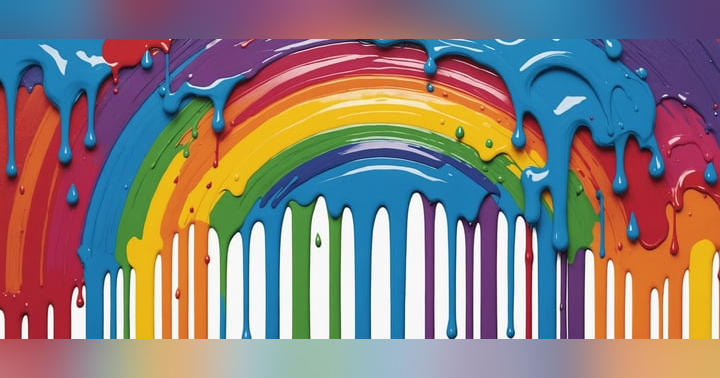Twink Death: Navigating Aging, Aesthetics, and Body Image in Gay Culture

Thanks for Reminding Me That My Size 28 Jeans No Longer Fit
What started as a playful Instagram trend—where users posted side-by-side images labeled as their “Twink Death”—has opened the door to a deeper conversation about age, body image, and identity within the gay community. While often shared with humor, many of these posts showed little physical difference beyond a slightly fuller beard or a barely-there wrinkle, prompting questions about what exactly is dying in these so-called transformations.
Behind the irony of the trend lies a more serious reflection of how queer culture, particularly gay male culture, can glorify youthful aesthetics and marginalize those who no longer fit that mold. This fixation not only shapes how gay men view themselves but also how they perceive worth, desirability, and community belonging as they age.
Defining the Twink: A Snapshot of Beauty, Youth, and Stereotypes in Gay Culture
Before exploring the concept of “Twink Death,” it’s important to understand what a twink is—and why the label carries such weight in queer culture. Broadly speaking, a twink is a young, slim, often boyish-looking gay man. While definitions vary slightly, most agree on a handful of defining traits: a lean or petite frame, little to no body hair, a youthful or even feminine appearance, and often an air of carefree charm. Traditionally, twinks are imagined to be in their late teens to early 20s, though some extend the label to those who retain the look well beyond that age.
The origins of the term are debated. Some trace it back to mid-20th century British slang like twank, while others point to American pop culture’s adoption of the word twinkie, later transformed into the current shorthand. Regardless of its linguistic roots, the term gained traction in the '90s and early 2000s through mainstream, often whitewashed, media portrayals like Queer as Folk. Today, public references often cite celebrities like Troye Sivan or Timothée Chalamet as modern-day twinks, reinforcing a narrow—and heavily aestheticized—standard of desirability.
While the definition has evolved to be more inclusive of different racial and gender identities, the archetype still clings tightly to youth and physicality. According to a 2024 Them article, twinks are often imagined as dainty, hairless, and doll-like, sometimes embodying femininity more than masculinity. And although “elder twinks” are acknowledged within the community, the emphasis on age and appearance remains central, laying the foundation for the cultural anxiety surrounding “Twink Death,” where simply aging out of a label can feel like losing visibility, relevance, or value.
What Is Twink Death? A Cultural Mirror Reflecting Fear of Aging and Loss of Desirability
While “Twink Death” may have entered the mainstream through humorous Instagram prompts and celebrity memes, its underlying message reveals something far more unsettling: a deep-rooted anxiety around aging, desirability, and physical change in gay male culture. Urban Dictionary defines “Twink Death” in several harsh ways, ranging from the idea that a twink becomes socially invisible after turning 30, to more cutting definitions describing a formerly attractive twink as “ugly” due to age-related changes like balding or wrinkles. These interpretations don’t just mark a departure from a subcultural aesthetic, but suggest a social death tied to no longer being considered sexually viable or culturally relevant.
Though the phrase gained broader visibility through platforms like Twitter and Reddit in the early 2020s, its origins stretch back even further. According to Know Your Meme, the term appeared as early as 2016 on 4chan’s LGBTQ+ board, where users discussed strategies to delay the perceived end of their “twink era.” By 2022, a Reddit thread titled Twink Death and Its Consequences gave the term new life, with users lamenting their inability to maintain a boyish aesthetic past their early twenties. One user even referenced the Latin term exoletus, historically associated with aging male sex workers in Ancient Rome, to describe the experience.
The trend reached viral levels in 2023 when Twitter users began sharing before-and-after photos of celebrities with captions like “Twink Death is a terrifying thing,” turning figures like Leonardo DiCaprio and Joe Biden into punchlines. Most recently, Instagram users have revived the trend with prompts asking others to share images from their “twink era,” often implying that their transformation, even when minimal, marks a kind of loss or decline.
At its core, Twink Death isn’t really about body type or even age. It’s about the fear of becoming undesirable in a culture that often values youth and beauty above all else. Whether it manifests through weight gain, receding hairlines, or the faintest wrinkle, the so-called death of the twink becomes shorthand for the existential dread of fading visibility, both romantically and socially, in the gay community.
The Deeper Issues Behind Twink Death: Ageism, Body Image, and a Lost Generation
While the idea of “Twink Death” often circulates on social media as a joke or nostalgic meme, its popularity underscores more serious and complex dynamics within the LGBTQ+ community. As a 2024 Grindr blog noted, the term reinforces a narrow standard of beauty, suggesting that anyone who falls outside the twink archetype is somehow less desirable or socially relevant. This goes beyond aesthetics; it reflects a broader discomfort with aging and physical change, deeply rooted in both societal pressures and historical trauma.
Much of this discomfort can be traced back to the loss of an entire generation of gay men during the AIDS crisis in the 1980s and ’90s. The epidemic robbed countless individuals of their lives and left a void in cultural continuity. As a result, many younger LGBTQ+ people grew up without visible, older role models to demonstrate what it looks like to age with authenticity, self-worth, and dignity. Without these guiding examples, aging has often felt like uncharted territory filled with fear, shame, and self-judgment.
Compounding this is the broader societal obsession with youth, which is often even more pronounced in gay male spaces. During the height of the AIDS crisis, youthful, muscular bodies were seen as markers of health and vitality, visual signals that one was HIV-negative or in good health. Though this association no longer holds the same urgency, the aesthetic ideals from that era continue to linger, shaping perceptions of attractiveness, self-worth, and even personal value. Today, that legacy manifests as ageism, fatphobia, and internalized shame about the natural changes that come with growing older.
From shifting metabolisms to hairlines to skin elasticity, the realities of aging are something every person faces, but for many gay men, these changes are met not with acceptance, but with resistance and self-criticism. Without the privilege of celebrity-level resources to “freeze time,” most are left to reconcile their evolving bodies with outdated standards of beauty. The fixation on returning to a younger, fitter, more culturally valued version of oneself can become a barrier to self-love and acceptance in the present.
Ultimately, the discourse around Twink Death is about more than physical appearance—it's about how the LGBTQ+ community defines value, visibility, and identity. Until there is broader representation and celebration of queer individuals at every stage of life, the fear of aging will continue to cast a shadow over the way many view themselves and each other.
Reframing Twink Death: From Fear of Aging to Embracing Growth
Aging is inevitable: bodies change, metabolisms shift, and youthful features soften. Yet within many gay spaces, these natural transitions are often viewed with discomfort or even disdain, particularly for those who once fit the “twink” mold. The concept of Twink Death has come to symbolize a deeper anxiety within the LGBTQ+ community: the fear of losing social value as one grows older.
To move past the shame that often accompanies the fear of aging, it's important to address the physical insecurities that fuel it. That begins by shifting how we care for and view our bodies:
- Practice self-compassion: Shift internal dialogue by speaking to yourself the way you would speak to a close friend. Avoid harsh self-criticism and resist fixating on perceived flaws.
- Focus on the whole body: Instead of zeroing in on parts you dislike, take a broader view. Appreciate the areas that bring you strength, joy, or pride.
- Avoid daily weigh-ins and obsessive fitness routines: These habits can reinforce negative self-perception. Instead, aim for a balanced approach to wellness that includes activities beyond physical appearance, such as art, music, or community involvement.
- Cultivate acceptance for all parts of the body: Learning to appreciate body parts that don't conform to beauty norms is challenging, but essential in building self-worth and rejecting toxic standards.
- Moderate social media use: Limit exposure to curated, filtered content that distorts body ideals. Unfollow accounts that fuel self-doubt and replace them with more affirming, inclusive voices.
Beyond individual practices, combating internalized ageism also requires broader cultural transformation. These community-level actions can help reframe age as a source of value and pride:
- Foster intergenerational connections: Build relationships with LGBTQ+ individuals across age groups through mentorship, advocacy, or social events. These interactions challenge the idea that youth is the only currency of worth and promote mutual respect and support.
- Find purpose beyond appearance: Reclaim visibility and self-worth by engaging in activities that highlight personal experience and impact, such as volunteering, joining advocacy efforts, or sharing your story with others.
- Seek LGBTQ+-affirming therapy: Work with professionals who understand the nuances of internalized ageism. Therapy can help unpack limiting beliefs, strengthen self-worth, and support the development of a new personal narrative that embraces aging.
Aging is not something to fear: it's a privilege that many gay men from previous generations never had the chance to experience. Our community must begin to view aging not as a loss, but as an opportunity for deeper authenticity, resilience, and connection.
In letting go of the twink archetype, there is space to embrace something far richer—an identity grounded not in fleeting aesthetics, but in the depth of lived experience and self-love.
Embracing Growth Beyond the Archetype
While the concept of Twink Death may be wrapped in humor, it reflects deeper anxieties around aging, desirability, and self-worth in the gay community. For too long, youth and physical perfection have been upheld as ideals, leaving many feeling inadequate as their bodies naturally change over time.
Furthermore, the pursuit of unattainable ideals can prevent gay men from fully living in the present and embracing the richness of their lived experience. And when self-worth becomes tethered to physical appearance, it becomes harder to form genuine connections with others or with oneself.
Fortunately, body image ideals within the LGBTQ+ community are expanding, and many are pushing back against the pressure to conform to narrow aesthetics. This provides us with an opportunity to redefine what it means to belong. It’s not about maintaining a certain look or fitting into a specific label, but rather showing up as a whole person, shaped by experiences, growth, and resilience.
Whether someone has aged out of the twink category or never fit that mold to begin with, their value doesn’t diminish. Every stage of life brings its own kind of beauty. By embracing that evolution instead of resisting it, queer individuals can move toward deeper self-acceptance and a more expansive, compassionate community.
In the end, aging isn’t something to fear—it’s a sign of survival, strength, and progress. And there's nothing more powerful, or attractive, than someone who fully owns who they are, right now.
And remember: every day is all we have, so you've got to make your own happiness.
For more information on this topic, listen to Episode 151. Twink Death: RIP Skinny Jeans.
Tune into your favorite podcast player every Tuesday for new episodes of A Jaded Gay.


















